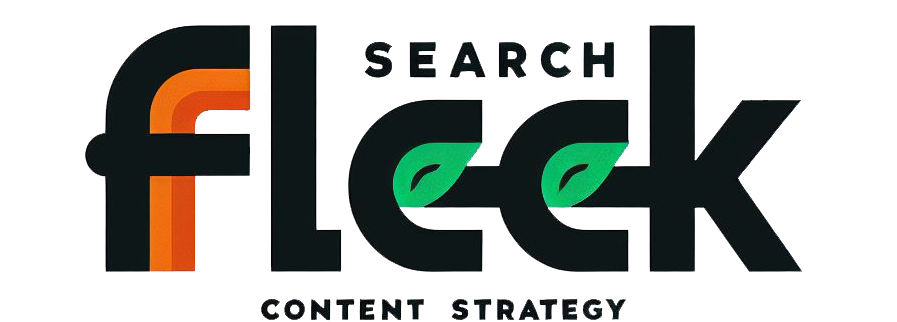In today’s digital world, print media might seem like a relic of the past. But the truth is, print remains a powerful tool for businesses. It offers a tangible experience that digital marketing can’t replicate, fostering brand connection and leaving a lasting impression.
However, simply offering printing services isn’t enough in a competitive market. Here’s where a blog can be a game-changer for your print business.
This comprehensive guide will equip you with everything you need to know about blogging for print businesses. We’ll cover the benefits, content strategy, optimization techniques, and how to measure your success.
The Power of Print in a Digital Age
Print isn’t dead; it’s just evolved. While digital marketing reigns supreme, print complements online strategies by:
- Offering Tangibility: A physical brochure or business card creates a more memorable experience than a digital ad.
- Building Trust: High-quality printed materials project professionalism and brand credibility.
- Targeted Reach: Printed flyers or postcards can reach specific demographics in a localized area.
Why Should Print Businesses Blog?
Blogging offers a multitude of benefits for print businesses, including:
- Increased Brand Awareness: Educate potential customers about your services and establish yourself as an industry expert.
- Lead Generation: Capture leads by providing valuable content that attracts and converts readers.
- Improved Customer Engagement: Foster communication and build trust with your audience through informative blog posts.
- SEO Benefits: Attract organic traffic by creating content rich in relevant keywords, improving your search engine ranking.
- Showcase Expertise: Position yourself as a leader in the printing industry by sharing knowledge and best practices.
Getting Started: Planning Your Print Business Blog

Before diving in, take some time to plan your blog for success. Here’s what you need to consider:
Define Your Target Audience: Identify who you want to reach with your blog. Are you targeting small businesses, marketing professionals, or designers? Understanding their needs and interests will guide your content creation.
Set Your Blogging Goals: Determine what you aim to achieve with your blog. Do you want to generate leads, increase brand awareness, or drive website traffic? Having clear goals will help you tailor your content strategy.
Develop a Content Calendar: Plan your blog topics in advance. This ensures consistency and helps you maintain a regular publishing schedule.
Content Strategy: What to Write About
Now comes the fun part: creating captivating content! Here are some engaging blog post ideas for your print business:
Design Tips & Trends: Share best practices for design layout, color theory, and image selection for various print materials (brochures, flyers, business cards). Offer practical advice on using design software or creating compelling visuals.
The Printing Process Explained: Demystify different printing techniques (offset, digital, etc.) and their advantages for specific projects. Explain the benefits of each method, such as cost-effectiveness, turnaround time, and suitability for different print projects.
Paper Selection Guide: Educate readers about different paper types, finishes, and weights. Explain how paper choices impact the final product and guide them towards selecting the right paper for their needs. Include high-quality visuals showcasing different paper textures and finishes.
Case Studies & Customer Success Stories: Showcase your work and expertise by highlighting successful printing projects for satisfied clients. Share the challenges you addressed, the printing solutions you provided, and the positive outcomes achieved.
Industry Trends & Insights: Discuss upcoming trends in the printing industry and how they might impact businesses. This could include the rise of eco-friendly printing practices, personalized print marketing, or the integration of augmented reality (AR) technology with printed materials.
Sustainability in Printing: Address eco-friendly printing practices and sustainable materials. This could include using recycled paper, vegetable-based inks, or offering carbon-neutral printing options. Highlight your commitment to environmental responsibility and attract customers who value sustainability.
Common Printing Mistakes & How to Avoid Them: Provide valuable advice on common pitfalls that can occur during the printing process, such as low-resolution images, incorrect color profiles, or typos. Offer solutions and best practices to ensure high-quality printing results.
The Future of Print: Explore emerging technologies and innovations shaping the future of the printing industry. Discuss 3D printing applications, advancements in personalization, or the use of interactive elements in printed materials.
Crafting Compelling Blog Content
Here are some tips to ensure your blog content is informative, engaging, and helps you achieve your goals:
Focus on Value, Not Just Sales: Don’t just promote your services. Provide informative and actionable content that benefits readers, regardless of whether they choose your company.
Write in a Clear and Engaging Style: Use concise language, avoid technical jargon, and personalize your writing with a conversational tone. Imagine you’re explaining things to a friend who isn’t familiar with the printing industry.
Incorporate Visuals: Include high-quality images, infographics, and videos to enhance reader engagement and understanding. Break up text with visuals to create a more visually appealing and digestible blog post.
Optimize for Readability: Use short paragraphs, bullet points, and subheadings to improve readability. This makes it easier for readers to scan your content and find the information they need quickly.
Showcase Your Expertise: Don’t be afraid to share your knowledge and experience in the printing industry. This positions you as a trusted resource and builds credibility with potential customers.
Call to Action: End your blog posts with a clear call to action (CTA). Tell readers what you want them to do next, whether it’s contacting you for a quote, subscribing to your newsletter, or downloading a helpful resource.
Optimizing Your Blog for Success

Once you have a solid content strategy, optimize your blog to maximize its reach and impact:
- Search Engine Optimization (SEO):
- Keyword Research: Identify relevant keywords that your target audience is searching for and integrate them naturally into your content. Use keyword research tools to discover popular search terms related to printing services, design trends, or industry challenges.
- Optimize Titles & Meta Descriptions: Craft clear and compelling titles and meta descriptions that accurately reflect your content and encourage clicks. Titles should be concise and include relevant keywords, while meta descriptions should provide a brief overview of your blog post.
- Internal Linking: Link to relevant blog posts within your website to improve navigation and user experience. This helps search engines understand the structure of your website and improves your overall SEO ranking.
- Promoting Your Blog:
- Social Media Marketing: Share your blog posts across social media platforms like LinkedIn, Facebook, or Twitter. Engage with readers in comments and discussions to build relationships and increase brand awareness.
- Email Marketing: Promote your blog content to your email subscribers and encourage them to share it with their networks.
- Collaborations & Guest Posting: Partner with other businesses in your industry or related fields for guest blogging opportunities. This allows you to reach a wider audience and establish yourself as an expert in a broader online community.
- Paid Advertising: Consider utilizing social media advertising or search engine marketing (SEM) to reach a wider audience and drive targeted traffic to your blog.
Measuring Your Results and Refining Your Strategy
Tracking your blog’s performance is crucial for identifying what works and what doesn’t. Here’s how:
- Track Your Blog’s Performance: Use analytics tools like Google Analytics to monitor key metrics such as:
- Website Traffic: See how many visitors your blog attracts and track traffic trends over time.
- Bounce Rate: Identify how many visitors leave your website after viewing just one page. A high bounce rate might indicate your content isn’t engaging or relevant to your target audience.
- Lead Generation: Track how many leads your blog generates through contact forms, email sign-ups, or other conversion points.
- Social Media Engagement: See how many shares, likes, and comments your blog posts generate on social media platforms.
- Analyze Data & Make Adjustments: Regularly review your analytics and adapt your content strategy based on what resonates with your audience. Consider factors like:
- Which blog posts generate the most traffic?
- What topics do readers engage with the most?
- Are there any keywords you’re missing?
By analyzing your data, you can refine your content strategy to create more engaging and effective blog posts that attract your target audience and achieve your business goals.
Conclusion
Blogging is a powerful tool for print businesses to stand out in a competitive market. By creating informative, engaging, and SEO-optimized content, you can attract new customers, showcase your expertise, and establish yourself as a leader in the printing industry.
Ready to start your print business blog? Remember, consistency is key. Develop a regular publishing schedule and keep your content fresh and relevant to your target audience. With dedication and these helpful tips, your blog can become a valuable asset for your print business.
Emon Anam, CEO of Search Fleek, isn't your typical digital guru. He brings a unique blend of financial expertise (former banking pro!) and digital marketing mastery to the table. A self-proclaimed "SEO Sherlock Holmes," Emon unlocks content secrets for local businesses and SaaS companies. But beyond the keyboard, he's a devoted family man, music enthusiast, and cricket champion. Let Emon weave your digital success story!
AI Writing Disclaimer
This post was initially researched and outlined by me. The content was then generated by an AI language model using the provided information. The final text has been reviewed and edited by me for accuracy and clarity.




